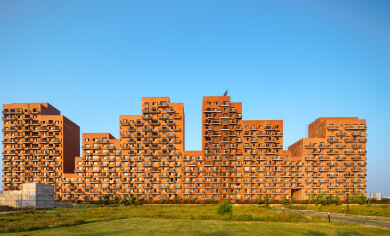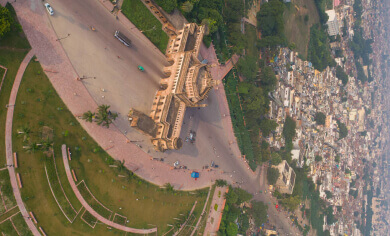
archoforum is a forum comprising of intense design workshops on ‘live’ archohm projects with international partners in india and overseas. the idea is to establish an international forum of design and discourse. archoforums are organized online and with bi-annual physical meetings, in Europe and india. these meetings form the basis of intense design workshops, and brainstorming sessions where particular projects are tackled. the archoforum also extends to site visits and deeper involvement in the building process. for archohm, a global design dialogue is an opportunity to gain tremendous experience and expertise through cross-cultural exchanges.


Oranje Castle, Lucknow is a housing project where Archohm invited and collaborated with Dutch housing experts, and architecture firm - MVRDV. Overlooking the Gomti River across its green buffer, the OranjeCastle is a self-contained housing development in which there are a total of 437 units with a mix of typologies. Conceptually, the design breaks away from the tower morphology, which has little regard for orientation, massing, variation or privacy. At the Oranje Castle,the dwelling units are arranged in a ring format along the periphery around a large courtyard, the size of two football fields, ensuring a landscape connection for each apartment. The massive courtyard in the centre creates the maximum distance between two apartments in a manner that the window of the neighbour is the farthest possible, thus allowing enough privacy as well as adequate natural light and ventilation to all units.


Lucknow, the city of nawabs is blessed to have a rich history and culture. The old city’s architecture is a witness to this. However, old Lucknow was a dense chaotic urban complex - replete with multiple experiences and narratives. In order to bring these stories to the citizens and the tourists, we rejuvenated the old city by giving it back to its people and developing it into a beautiful public space.The design intent for the enhancement of this 1.3km heritage walk from the Bada Imambara to the Chota Imambara * attempts to create a panorama by tying all monuments within a walkable spine.* The main aim is to cobble streets to control vehicular movements and the include wide pavements to facilitate and encourage pedestrians.


The Mughal Museum is situated in the city of Agra, near the eastern gate of the Taj Mahal. The museum presents the political and cultural milestones of the Mughal era through its art and architecture and accommodates 5,200 square metres of permanent and temporary exhibition space. Studio Archohm invited David Chipperfield Architects, Berlin to collaborate for this prestigious new museum. With reference to traditional Mughal architecture, the museum adopts principles such as rationality, order and repetition, and reinterprets these in a modern architectural language. Colonnades, placed at close intervals, frame the building and interweave interior and exterior space. Generous external staircases lead to a public roof terrace with an open pavilion where a café and tree-shaded areas provide an inviting environment with views towards the Taj Mahal. The opaque façade of the museum is made of marble while the exhibition spaces are characterised by stone and fair-faced concrete.